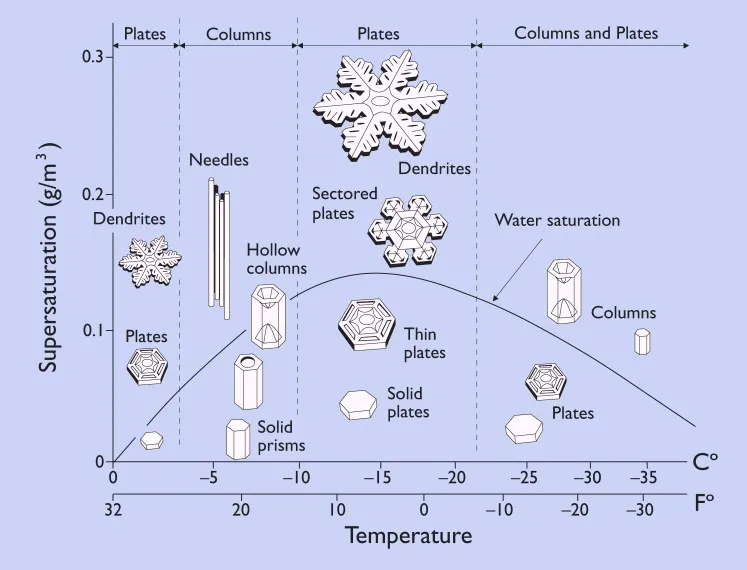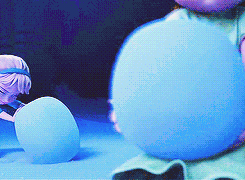Do You Want To Build a Snowman? Physics Can Help
Here’s what you need to know about the science of constructing your very own Olaf
/https://tf-cmsv2-smithsonianmag-media.s3.amazonaws.com/filer/43/0c/430ce021-3089-415f-bb2d-340465beed4e/2204449610_6a0aa9d569_o.jpg)
Without magical ice princess powers, building the perfect snowman can be a serious challenge. Often our efforts turn out a little lumpy or lopsided and quickly melt into unrecognizable lumps. Yet constructing your own personal Frosty or Olaf remains the quintessential winter pastime.
Plenty of YouTube videos and parenting websites offer snowman-building advice, and there are about as many how-to guides as there are “Let It Go” parodies on the Internet. Someone even patented instructions for building a snowman/snowwoman in 2011. But all the advice might be for naught if you don't have science on your side. Understanding the physical properties of snow can help you figure out whether your masterpiece is even feasible, and the principles of stacking can then guide your efforts.
First, let’s talk about the snow. “Snow can either be too wet or too dry,” points out Dan Snowman, a physicist at Rhode Island College in Providence. Scientists actually classify snow based on its moisture content—the amount of free water relative to ice crystals—not to be confused with the amount of water the snow would produce if melted. Snow comes in five categories: dry (zero percent water), moist (less than 3 percent), wet (3 to 8 percent), very wet (8 to 15 percent) and slush (more than 15 percent).
By that scale, moist to wet snow is ideal for snowman building, according to Jordy Hendrikx, a snow scientist at Montana State University. Dry snow is like a loose powder with particles that don’t stick together very well, while slush is too fluid to hold a shape. “You can think of the free water as the ‘glue.’ You need enough to stick the crystals together, but not too much. Otherwise it won't form a solid snowman,” says Hendrikx.

The surrounding air temperature mainly determines the amount of water in snow, as well as its crystal structure. Wet and moist snows fall at around 32 degrees Fahrenheit. Far below-freezing temperatures make for drier snow, because more water particles freeze into crystals. Freshly fallen wet or moist snow crystals are usually shaped like classic branching snowflakes, called dendrites, providing lots of surface area for the watery glue to bind with. Colder conditions produce flat plate shapes with less surface area, making it even harder to mold the dry powder into snowballs and snowmen.
“Years of experimentation and research with my kids reveal a snow-to-water equivalence of about 5:1 yields the snow ideal for building the perfect snowman,” Snowman says.
So what kind of storm would produce this special blend of moist or wet snow? “The best storms are ones that come in fairly warm—for snow that is,” says Hendrikx. That means just a degree or two above or below freezing. On the U.S. East Coast, a cool, wet Nor’easter—not unlike the blizzard that hit the Northeast this week—would do the trick. Polar vortex conditions would more likely sprinkle the dry powder that offers a soft, smooth ride ideal for skiing.
Once the raw material is on the ground, it’s time to select your snowman-building surface. Level ground is best, but asphalt absorbs and holds heat from sunlight, so avoid driveways. A flat spot near the bottom of a large hill could provide shade and keep your creation safe from direct warmth from the sun—although it may wind up as a target for sleds.
Spheres are the best building blocks for snowmen. Forming snowballs and packing the snow together exerts pressure on the ice crystals so that some melt during construction. “After melting, the water will crystallize once again, binding together the snowball,” Snowman notes.

When it comes to stacking, the standard large-medium-small structure is the way to go to avoid toppling. “Keeping the snowman’s center of mass low is paramount in the construction of any snowman,” says Snowman. The center of mass refers to the point in any object where its mass is concentrated—if you could balance a snowman on your finger, holding it at the center of mass would keep it stable. The closer that point is to the ground, the less likely a vertical object is to fall over.
Looking at snowman-building as a way to teach basic engineering principles, students at Bluefield State College in West Virginia suggest that the optimal diameter ratio for the snowballs is 3:2:1 from bottom to top. This ratio keeps the base at a sufficient size to support the combined weight of the top two snowballs. According to some accounts, inverted snowman construction is feasible, but probably unsustainable. “These are about as common as Sasquatch sightings,” warns Snowman.
And don't build your abominable snowman too big, because there may be an upper limit to the size of the spheres, related to the water content of the snow. “As the snowball grows, it is more difficult to apply pressure to adequately pack,” says Snowman. “This potentially results in an unstable structure for Frosty’s body parts and may result in catastrophic failure.”
In addition to stability, spheres can help your snowman achieve longevity, because the shapes minimize the surface area exposed to rising temperatures and thus slow down melting. “This gives Frosty the best chance to remain calm and cool,” says Snowman. Unfortunately, melting is inevitable as temperatures rise. Thanks to Frozen, we all know what happens to snowmen in summer.
/https://tf-cmsv2-smithsonianmag-media.s3.amazonaws.com/accounts/headshot/Screen_Shot_2014-01-27_at_12.05.16_PM.png)
/https://tf-cmsv2-smithsonianmag-media.s3.amazonaws.com/accounts/headshot/Screen_Shot_2014-01-27_at_12.05.16_PM.png)